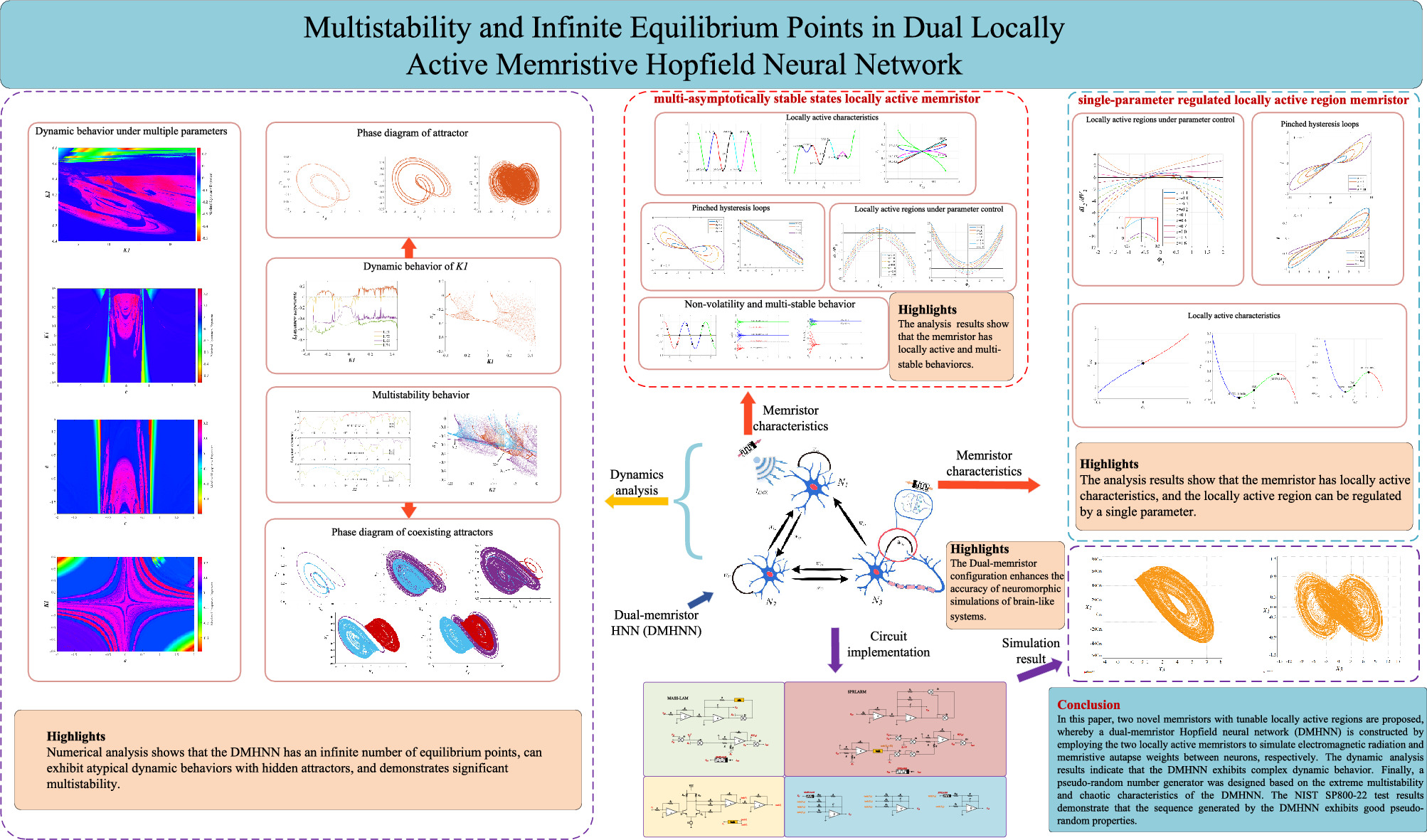https://doi.org/10.1140/epjp/s13360-025-06613-5
Regular Article
Multistability and infinite equilibrium points in dual locally active memristive Hopfield neural network
1
College of Big Data and Information Engineering, Guizhou University, 550025, Guiyang, China
2
State Key Laboratory of Public Big Data, Guizhou University, 550025, Guiyang, China
3
Guizhou Key Laboratory of Artificial Intelligence and Brain-inspired Computing, College of Mathematics and Big Data, Guizhou Education University, 550018, Guiyang, China
4
State Key Laboratory of Public Big Data, Key Laboratory of Advanced Manufacturing Technology of Ministry of Education, Guizhou University, 550025, Guiyang, China
5
School of Mechanical and Electrical Engineering, Guizhou Normal University, 550025, Guiyang, China
Received:
17
April
2025
Accepted:
2
July
2025
Published online:
19
July
2025
The study of brain-like network dynamics contributes to understanding biological neural mechanisms and brain functions. In this paper, a multi-asymptotically stable state locally active memristor and a single-parameter regulated locally active region memristor are proposed. A dual-memristor Hopfield neural network (DMHNN) is then constructed by employing these two types of locally active memristors to simulate electromagnetic radiation and memristive autapse weights between neurons, respectively. Numerical analyses demonstrate that DMHNN possesses an infinite number of equilibrium points and is capable of generating atypical dynamic behaviors with hidden attractors. The effects of electromagnetic radiation intensity and autapse coupling strength on the dynamical behaviors of the DMHNN are analyzed, demonstrating that the DMHNN can exhibit multiple complex dynamic characteristics including periodic, quasi-periodic, and chaotic states across parameter space. Furthermore, it is found that the DMHNN has multistability, that is, the coexistence of multiple combinations of attractors (only limit cycles, limit cycles with hidden chaotic attractors, or only hidden chaotic attractors), obtained by changing only the initial conditions. Meanwhile, to verify the theoretical model, an analog circuit is designed using Multisim, and the circuit simulation results closely match the numerical analyses. Finally, an internal initial value mapping scheme is designed, which exploits the multistability of the DMHNN to enable adaptive stochastic selection between two coexisting chaotic attractors, thereby enhancing the unpredictability of chaotic sequences. Based on this scheme, a pseudorandom number generator is subsequently developed, with the NIST SP800-22 test revealing that the generated sequence exhibits excellent randomness and demonstrates significant potential for engineering applications in information encryption.
Copyright comment Springer Nature or its licensor (e.g. a society or other partner) holds exclusive rights to this article under a publishing agreement with the author(s) or other rightsholder(s); author self-archiving of the accepted manuscript version of this article is solely governed by the terms of such publishing agreement and applicable law.
© The Author(s), under exclusive licence to Società Italiana di Fisica and Springer-Verlag GmbH Germany, part of Springer Nature 2025
Springer Nature or its licensor (e.g. a society or other partner) holds exclusive rights to this article under a publishing agreement with the author(s) or other rightsholder(s); author self-archiving of the accepted manuscript version of this article is solely governed by the terms of such publishing agreement and applicable law.





